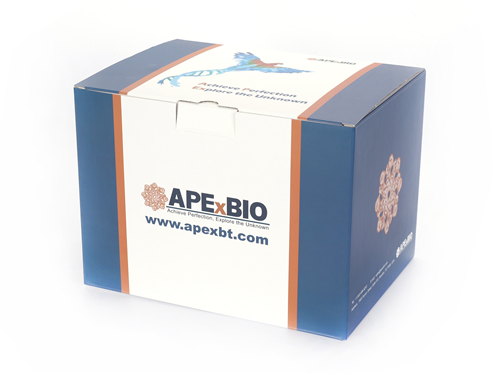Recombinant Murine Breast and Kindey-expressed Chemokine/CXCL14
Chemokine (C-X-C motif) ligand 14 (CXCL14), also named BRAK, is a small cytokine belonging to the CXC chemokine family. It is constitutively expressed at the mRNA level in certain normal tissues and it possesses chemoattractive activity for activated macrophages, immature dendritic cells and natural killer cells. According to the relevant literature, CXCL14 is associated with tumor development. Moreover, recent evidence revealed that CXCL14 participates in glucose metabolism, feeding behaviour-associated neuronal circuits, and anti-microbial defense. Although CXCL14 receptors have not yet been identified, the intracellular activity of CXCL14 in breast cancer cells suggests that the CXCL14 receptor(s) and signal transduction pathway(s) may be different from those of conventional CXC-type chemokines. Recombinant murine CXCL14 contains 77 amino acid residues and it shares 97 % and 99 % a.a. sequence identity with human and rat CXCL14.
Reference
1. Hromas R, Broxmeyer HE, Kim C, et al. 1999. Biochem Biophys Res Commun. 255:703-6
2. Starnes T, Rasila KK, Robertson MJ, et al. 2006. Exp Hematol. 34:1101-5
3. Shurin GV, Ferris RL, Tourkova IL, et al. 2005. J Immunol. 174:5490-8
4. Kurth I, Willimann K, Schaerli P, et al. 2001. J Exp Med. 194:855-61
5. Hara T, Tanegashima K. 2012. J Biochem. 151:469-76
6. Shellenberger TD, Wang M, Gujrati M, et al. 2004. Cancer Res. 64:8262-70.
| Gene ID | 57266 |
| Accession # | Q9WUQ5 |
| Alternate Names | B-cell and Monocyte-activating Chemokine, Chemokine BRAK, Kidney-expressed Chemokine CXC, MIP-2G, Small-inducible Cytokine B14 |
| Source | Escherichia coli. |
| M.Wt | Approximately 9.4 kDa, a single non-glycosylated polypeptide chain containing 77amino acids. |
| AA Sequence | SKCKCSRKGP KIRYSDVKKL EMKPKYPHCE EKMVIVTTKS MSRYRGQEHC LHPKLQSTKR FIKWYNAWNE KRRVYEE |
| Appearance | Sterile Filtered White lyophilized (freeze-dried) powder. |
| Stability & Storage | Use a manual defrost freezer and avoid repeated freeze-thaw cycles. - 12 months from date of receipt, -20 to -70 °C as supplied. - 1 month, 2 to 8 °C under sterile conditions after reconstitution. - 3 months, -20 to -70 °C under sterile conditions after reconstitution. |
| Formulation | Lyophilized from a 0.2 μm filtered concentrated solution in 20 mM PB, 400 mM NaCl, pH 7.4, 5 % trehalose. |
| Reconstitution | We recommend that this vial be briefly centrifuged prior to opening to bring the contents to the bottom. Reconstitute in sterile distilled water or aqueous buffer containing 0.1 % BSA to a concentration of 0.1-1.0 mg/ml. Stock solutions should be apportioned into working aliquots and stored at ≤-20 °C. Further dilutions should be made in appropriate buffered solutions. |
| Biological Activity | Fully biologically active when compared to standard. The biological activity determined by a chemotaxis bioassay using human monocytes is in a concentration range of 1.0-10 ng/ml. |
| Shipping Condition | Gel pack. |
| Handling | Centrifuge the vial prior to opening. |
| Usage | For Research Use Only! Not to be used in humans. |
Quality Control & DataSheet
- View current batch:
-
Purity > 95 % by SDS-PAGE and HPLC analyses.
- Datasheet
Endotoxin: Less than 1 EU/μg of rMuBRAK/CXCL14 as determined by LAL method.








